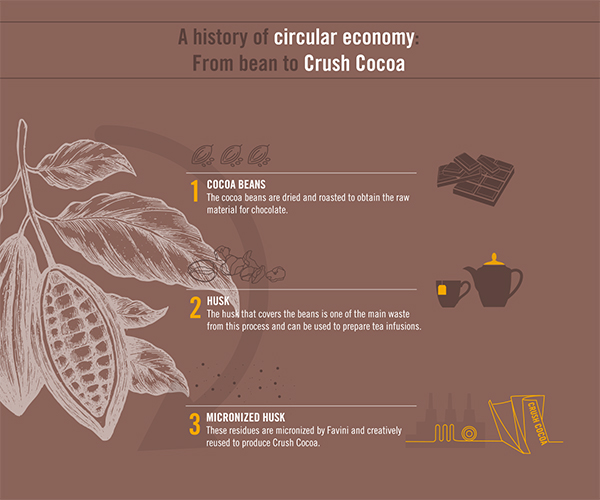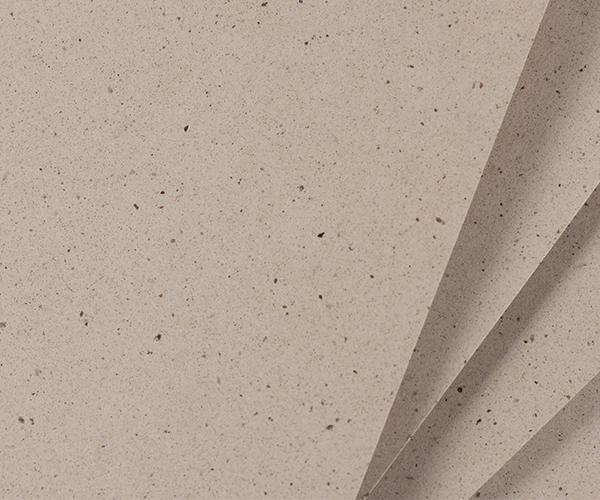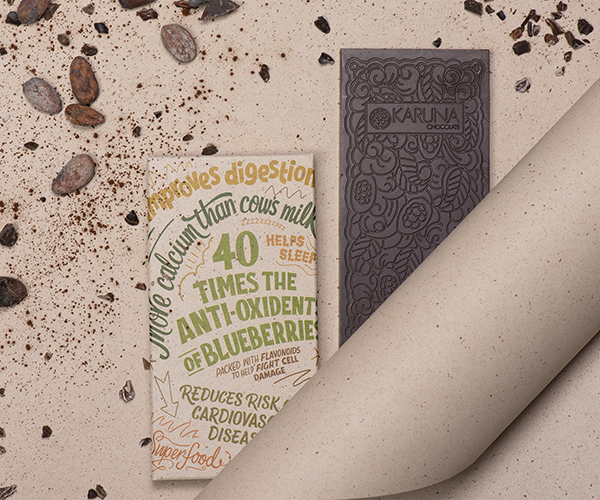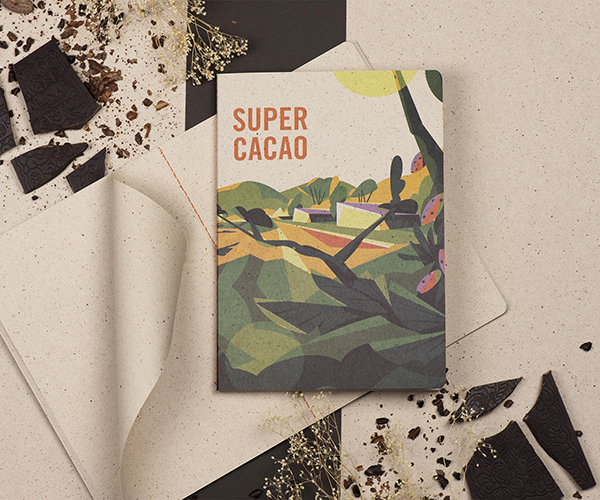Our Crush Story section tells the life cycle of alternative raw materials that are used in our factory to produce Crush ecological paper, from a circular economy perspective.
Recently at Luxepack Monaco, the luxury packaging fair, we presented the latest addition to the Crush range: Crush Cocoa which has now available from stock together with the versions Citrus, Grape, Cherry, Lavender, Corn, Olive, Coffee, Kiwi, Hazelnut and Almond.
Cocoa is a big market, in fact in a year we spend $100 billion on chocolate products. Estonia tops the country list: Consuming more than 7 kg of chocolate per capita p.a.
The cocoa plant has very ancient origins and the first farmers were the Maya around 1000 BC. But it is only since 1500 AD that it reached European civilization.
Criollo, Forastero and Trinitario are the most common varieties of cocoa from which chocolate is obtained, one of the most popular foods for adults and children. But who would have thought that it can also be used to produce paper?
Let’s find out below the life cycle of cocoa from the fruit to the ecological Crush paper.
Crush Story Cocoa: from bean to paper

How is chocolate made?
It all starts with a tropical plant, Theobroma cacao. Its seeds, the broad beans, are extracted from the fruit and are fermented. They are then dried and roasted. After a phase of mincing, a grain is obtained which is processed until a soft paste is formed.
By combining sugar, cocoa butter and other ingredients, the ubiquitous chocolate bar is created. [1]
The shells which contain the bean are reused in different sectors. In the Ivory Coast, for example, it is used at a biomass plant to generate electricity. [2]
It can also be used to create a compost to fertilize fields. Or these shells can be baked and ground into powder to obtain a base for the soap.
Subsequent to the cocoa preparation process to produce chocolate, by-products are commonly destined to a final use in agriculture or to create energy through combustion. Alternatively, Favini has found a way to re-value this waste and create a precious paper: Crush Cocoa.
During the roasting phase and subsequent shelling of the cocoa beans, the skin that surrounds them is separated, becoming processing waste. These residues from the production of chocolate can be re-evaluated into a raw material, for example they can be used for the preparation of infusions, making a drink which is excellent during the change of season thanks to their antioxidant properties.
Which by-product does Favini use? The skin of the cocoa bean is used to make our Crush paper. It is micronized at our factory and so it can replace up to 15% of virgin cellulose. The paper obtained respects the principles of the circular economy and is of high quality. Crush Cocoa is now added to the wider Crush range which contains the by-products from the processing of kiwi, corn, cherries, coffee, almonds, hazelnuts, olives, grapes, citrus fruits and lavender.
A product that had previously completed its life cycle is now put back into a new production process following the logic of the circular economy.

The sustainable paper suitable for creative and design projects
Crush Cacao is suitable for all your editorial and packaging projects and in fact the first products have already been made.

Used as a wrapper for this quality chocolate bar, giving even more character to the product. What better solution than Crush Cocoa to pack a fine chocolate bar?

But using Crush Cocoa to create notebooks is also a great idea: fun, delectable and at the same time sustainable.
Favini is always ready to open the doors of its R&D laboratories to study and search for new paper solutions, especially ecological ones. As for cocoa, Domori, a brand that exemplifies excellent chocolate, has collaborated with Favini to transform its waste cocoa skins into Crush Cocoa Domori, a customized version of the paper used for a packaging line.
Have you used our ecological Crush paper and want to share the result on our social channels? Write your piece of circular economy history to [email protected]. Keep following the Crush Story column:
- From citrus fruit to paper
- From bean to Crush Coffee
- From flower to Crush Lavender
- From cherry tree to Crush Cherry paper
- From corn crop to Crush paper
- From vineyards to Crush Grape
- From nut kernels into Crush paper
- From field to Crush Barley
- From olive grove to the ecological paper Crush
- From Kiwi fruit to the ecological paper Crush
- From coconut to paper
A delectable and sustainable paper, made even more irresistible by its unique tactile and visual aspect, capable of stimulating the senses.
Request the updated Crush sample here
[1] https://www.focusjunior.it/ricette/come-si-fa-il-cioccolato/
[2] https://www.tag43.it/costa-davorio-cacao-elettricita-come function


